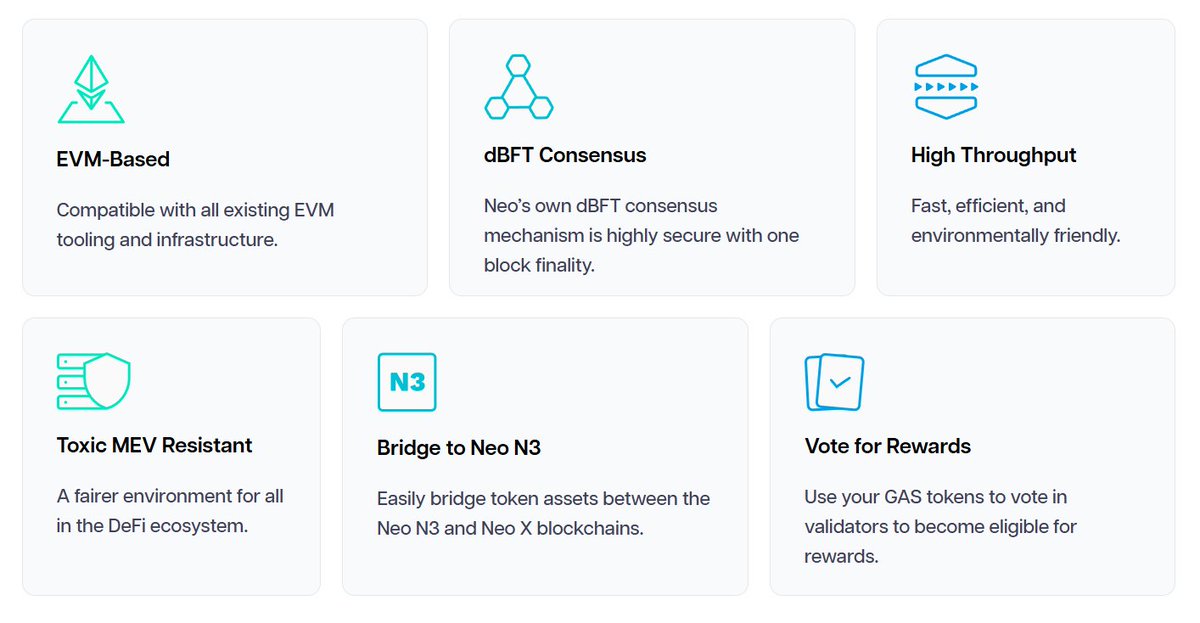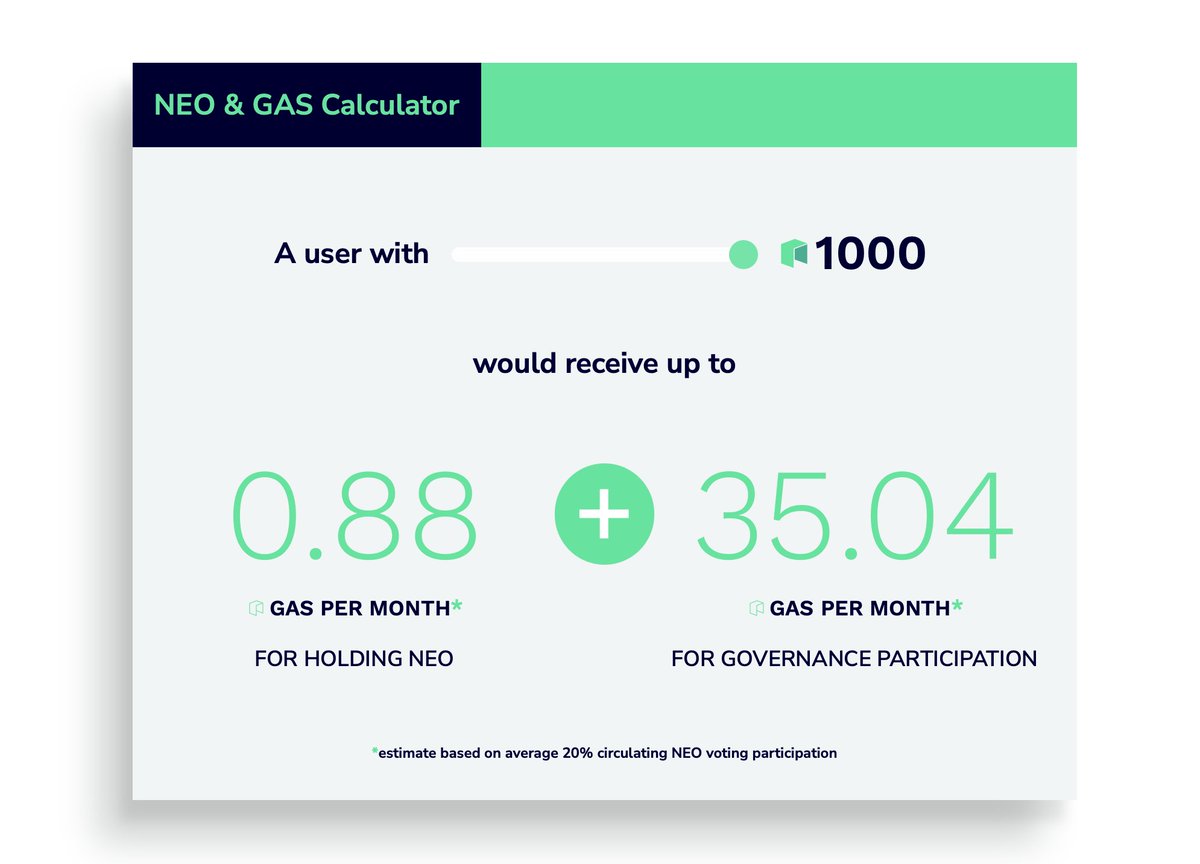
NEO
Курс NEO
$6,4890
-$0,37000
(-5,40 %)
Динамика цены за 24 часа

Какой у вас прогноз для NEO сегодня?
Дайте ваш рыночный прогноз: поставьте палец вверх, если ожидаете роста курса этой криптовалюты, или палец вниз, если ожидаете падения.
Проголосуйте, чтобы посмотреть результаты
Дисклеймер
Информация о социальных сетях на этой странице («Информация»), в том числе публикации из X и статистика от LunarCrush, предоставлена третьими сторонами и приводится только для справки. OKX не гарантирует качество и точность Информации. Статья не отражает взглядов OKX и не является инвестиционным советом и рекомендацией, предложением или призывом к покупке, продаже и хранению цифровых активов, а также финансовым, бухгалтерским, юридическим или налоговым советом. Цифровые активы, в том числе стейблкоины и NFT, сопряжены с высокими рисками и волатильностью. Цена и доходность цифровых активов не фиксирована и может в любой момент измениться.<br></br>OKX не дает рекомендаций по инвестированию и хранению активов. Тщательно оцените свою финансовую ситуацию и определите, подходит ли вам торговля и владение цифровыми активами. По вопросам, связанным с вашими конкретными обстоятельствами, обращайтесь к специалистам в области законодательства, налогов или инвестиций. С подробностями можно ознакомиться, изучив <a href="/help/terms-of-service">Условия использования</a> и <a href="/help/risk-compliance-disclosure">Предупреждение о рисках</a>. Переходя на сайты третьих сторон («Сторонние сайты»), вы принимаете их условия использования. OKX и ее партнеры («OKX») не связаны с владельцами и руководителями Сторонних сайтов, если иное не указано в письменной форме. Вы соглашаетесь с тем, что OKX не несет ответственности за убытки, ущерб и любые другие последствия использования Сторонних сайтов. Помните, что использование Сторонних сайтов может привести к полной или частичной потере активов. Продукт может быть доступен не во всех юрисдикциях.
Рыночные данные NEO
Рыночная капитализация
Рыночная капитализация рассчитывается путем умножения объема криптовалюты в обращении на текущий курс.
Рыночная капитализация = объем в обращении × цена последней сделки
Рыночная капитализация = объем в обращении × цена последней сделки
Объем в обращении
Общая сумма этой криптовалюты в открытом доступе на рынке.
Рейтинг капитализации
Место криптовалюты в рейтинге по рыночной капитализации.
Рекордная цена
Макс. цена криптовалюты, зафиксированная в истории сделок.
Исторический минимум
Минимальная цена криптовалюты, зафиксированная в истории сделок.
Рыночная капитализация
$457,81M
Объем в обращении
70 530 000 NEO
100 000 000 NEO
: 70,53 %Рейтинг капитализации
87
Аудиты

Последний аудит: 3 июн. 2021 г.
Максимум за 24 ч
$6,8730
Минимум за 24 ч
$6,3990
Рекордная цена
$188,00
-96,55 % (-$181,51)
Последнее обновление: 16 янв. 2018 г.
Исторический минимум
$3,9000
+66,38 % (+$2,5890)
Последнее обновление: 13 мар. 2020 г.
Новости о NEO
Следующая информация получена от .




andrew.moh
Среди обломков пика криптовалют 2017 года, немногие проекты все еще стоят.
Один из них — @Neo_Blockchain — проверенная временем 'Дино Монета', которая не только выжила, но и эволюционировала.
С Neo X, соединяющимся с EVM и моделью двойного токена, все еще приносящей ценность,
является ли Neo историей возвращения на рынок криптовалют нового поколения? 🧵🔽

12,28 тыс.
118

riddler
Познакомьтесь с Neo X, расширением @Neo_Blockchain, совместимым с EVM, с защитой от MEV на уровне протокола и полной совместимостью с $ETH 👇
Владение $NEO и голосование приносит ~15–20% годовых в $GAS без стейкинга или блокировок
Сам протокол проверен в боевых условиях с более чем 10-летним временем работы
Показать оригинал
18,99 тыс.
110

Пользователь Stacy Muur сделал репост

Stacy Muur
Если вы ветеран криптовалюты, то наверняка знаете @Neo_Blockchain. Но знали ли вы, что у них есть мощная модель с двумя токенами: $GAS (токен утилиты) и $NEO (токен управления)?
Кратко:
Владение $NEO приносит вам $GAS, который необходим для оплаты комиссий за транзакции и выполнения смарт-контрактов.
Просто удерживая $NEO, вы можете получать годовую доходность (APR) около 4–5%. При активном участии в управлении доходность может составлять около 15–20%.
Это довольно интересная модель для стимулирования экономики токенов управления, на мой взгляд.
Показать оригинал
38,65 тыс.
123
Калькулятор NEO


Статистика курса NEO (в USD)
Текущая цена NEO составляет $6,4890. За прошедшие сутки курс NEO упал на -5,39 %. Текущий объем в обращении составляет 70 530 000 NEO, а общая эмиссия — 100 000 000 NEO. Рыночная капитализация этой криптовалюты при полной эмиссии составит $457,81M. Сейчас NEO удерживает 87‑ю позицию в рейтинге по рыночной капитализации. Курс NEO/USD обновляется в реальном времени.
Текущий день
-$0,37000
-5,40 %
7 дней
-$0,26200
-3,89 %
30 дней
+$1,1300
+21,08 %
3 месяца
-$4,3930
-40,37 %
Популярные валюты для конвертации NEO
Последнее обновление: 17.05.2025, 19:03
| 1 NEO в USD | 6,4910 $ |
| 1 NEO в EUR | 5,8152 € |
| 1 NEO в PHP | 362,22 ₱ |
| 1 NEO в IDR | 107 059,2 Rp |
| 1 NEO в GBP | 4,8867 £ |
| 1 NEO в CAD | 9,0683 $ |
| 1 NEO в AED | 23,8414 AED |
| 1 NEO в VND | 168 247,8 ₫ |
Описание NEO (NEO)
Рейтинг составляется на основе сведений, собранных из доступных источников. Данные предоставляются исключительно в информационных целях. OKX не гарантирует качество и точность рейтингов. Рейтинг не является инвестиционным советом и рекомендацией, предложением или стимулом к покупке, продаже и хранению цифровых активов, а также финансовым, бухгалтерским или налоговым советом. Цифровые активы, в том числе стейблкоины и NFT, сопряжены с высокой степенью риска, их курсы могут сильно колебаться вплоть до полного обесценивания. Цифровые активы не застрахованы от возможных убытков. Доходность в прошлые периоды не гарантирует доходность в будущем. OKX не гарантирует доход, возвращение основного капитала и процентов. OKX не предоставляет рекомендаций по инвестированию и использованию активов. Перед инвестированием тщательно оцените ваше финансовое состояние и определите, подходит ли вам торговля и удерживание цифровых активов. Перед торговлей рекомендуем проконсультироваться со специалистом по юридическим, налоговым или инвестиционным вопросам.
Развернуть
- Официальный сайт
- Github
- Обозреватель блоков
О сторонних веб-сайтах
О сторонних веб-сайтах
Используя сторонний сайт, вы соглашаетесь с тем, что любое его использование будет регулироваться условиями стороннего сайта. OKX и его партнеры («OKX») никоим образом не связаны с владельцем или оператором стороннего сайта, если это прямо не указано в письменной форме. Вы соглашаетесь с тем, что OKX не несет ответственности ни за какие потери, ущерб и любые другие последствия, возникшие в результате использования вами стороннего сайта. Помните, что использование стороннего сайта может привести к утрате или сокращению ваших активов.
Вопросы и ответы о NEO
Сколько стоит 1 NEO сейчас?
Сейчас курс NEO составляет $6,4890. На этой странице вы найдете анализ динамики NEO. Изучите актуальные графики NEO и торгуйте ответственно с OKX.
Что такое криптовалюта?
Криптовалюты (как NEO) — это цифровые активы, работающие в общедоступном онлайн-реестре, называемом «блокчейн». На OKX вы найдете множество криптовалют с подробной статистикой в реальном времени — графиками объема и курса и др.
Когда появились криптовалюты?
Интерес к децентрализованным финансам значительно возрос в 2008 году на фоне мирового финансового кризиса. Тогда Bitcoin стал инновационным решением, предложившим надежный цифровой актив, работающий в децентрализованной сети. С тех пор в мире появились тысячи новых токенов, в том числе и NEO.
Поднимется ли сегодня цена NEO?
Просмотрите Страница прогноза цен на NEO, чтобы узнать прогнозы цен и определить целевые цены.
Раскрытие данных ESG
Нормативные предписания ESG (экологические, социальные и управленческие факторы) в сфере криптоактивов направлены на снижение их экологического воздействия (например, за счет сокращения энергоемкого майнинга), повышение прозрачности и обеспечение этичного управления. Эти меры помогают интегрировать криптоиндустрию в более широкую стратегию устойчивого развития и учитывать общественные интересы. Нормативные предписания способствуют соответствию стандартам, снижению рисков и укреплению доверия к цифровым активам.
Сведения об активах
Название
OKcoin Europe LTD
Соответствующий идентификатор юридического лица
54930069NLWEIGLHXU42
Название криптовалютного актива
NEO
Механизм консенсуса
NEO is present on the following networks: ethereum, neo.
The Ethereum network uses a Proof-of-Stake Consensus Mechanism to validate new transactions on the blockchain. Core Components 1. Validators: Validators are responsible for proposing and validating new blocks. To become a validator, a user must deposit (stake) 32 ETH into a smart contract. This stake acts as collateral and can be slashed if the validator behaves dishonestly. 2. Beacon Chain: The Beacon Chain is the backbone of Ethereum 2.0. It coordinates the network of validators and manages the consensus protocol. It is responsible for creating new blocks, organizing validators into committees, and implementing the finality of blocks. Consensus Process 1. Block Proposal: Validators are chosen randomly to propose new blocks. This selection is based on a weighted random function (WRF), where the weight is determined by the amount of ETH staked. 2. Attestation: Validators not proposing a block participate in attestation. They attest to the validity of the proposed block by voting for it. Attestations are then aggregated to form a single proof of the block’s validity. 3. Committees: Validators are organized into committees to streamline the validation process. Each committee is responsible for validating blocks within a specific shard or the Beacon Chain itself. This ensures decentralization and security, as a smaller group of validators can quickly reach consensus. 4. Finality: Ethereum 2.0 uses a mechanism called Casper FFG (Friendly Finality Gadget) to achieve finality. Finality means that a block and its transactions are considered irreversible and confirmed. Validators vote on the finality of blocks, and once a supermajority is reached, the block is finalized. 5. Incentives and Penalties: Validators earn rewards for participating in the network, including proposing blocks and attesting to their validity. Conversely, validators can be penalized (slashed) for malicious behavior, such as double-signing or being offline for extended periods. This ensures honest participation and network security.
The NEO blockchain uses a Delegated Byzantine Fault Tolerance (dBFT) consensus mechanism to validate transactions, relying on an elected committee and consensus nodes to maintain security and efficiency. Core Components of dBFT: 1. Candidates: a. Individuals or organizations can register as candidates for committee membership, a process that requires on-chain registration. b. NEO holders vote for candidates based on their NEO holdings, with votes calculated every 21 blocks. c. Elections are valid if more than 20% of all NEO tokens participate in voting. The candidates with the most votes are selected as committee members and consensus nodes. 2. Committee: a. The top 21 candidates with the most votes are elected as committee members. This committee is responsible for governing the network, including electing node roles like Oracle nodes, StateRoot consensus nodes, NeoFS Inner Ring nodes, and consensus nodes. b. The seven members with the highest votes also serve as consensus nodes, responsible for proposing and generating new blocks. Consensus nodes are rotated every 21 blocks to maintain security and decentralization. c. Committee proposals require more than 50% agreement for approval, allowing the committee to update blockchain parameters as needed.
Система поощрений и применимые комиссии
NEO is present on the following networks: ethereum, neo.
Ethereum, particularly after transitioning to Ethereum 2.0 (Eth2), employs a Proof-of-Stake (PoS) consensus mechanism to secure its network. The incentives for validators and the fee structures play crucial roles in maintaining the security and efficiency of the blockchain. Incentive Mechanisms 1. Staking Rewards: Validator Rewards: Validators are essential to the PoS mechanism. They are responsible for proposing and validating new blocks. To participate, they must stake a minimum of 32 ETH. In return, they earn rewards for their contributions, which are paid out in ETH. These rewards are a combination of newly minted ETH and transaction fees from the blocks they validate. Reward Rate: The reward rate for validators is dynamic and depends on the total amount of ETH staked in the network. The more ETH staked, the lower the individual reward rate, and vice versa. This is designed to balance the network's security and the incentive to participate. 2. Transaction Fees: Base Fee: After the implementation of Ethereum Improvement Proposal (EIP) 1559, the transaction fee model changed to include a base fee that is burned (i.e., removed from circulation). This base fee adjusts dynamically based on network demand, aiming to stabilize transaction fees and reduce volatility. Priority Fee (Tip): Users can also include a priority fee (tip) to incentivize validators to include their transactions more quickly. This fee goes directly to the validators, providing them with an additional incentive to process transactions efficiently. 3. Penalties for Malicious Behavior: Slashing: Validators face penalties (slashing) if they engage in malicious behavior, such as double-signing or validating incorrect information. Slashing results in the loss of a portion of their staked ETH, discouraging bad actors and ensuring that validators act in the network's best interest. Inactivity Penalties: Validators also face penalties for prolonged inactivity. This ensures that validators remain active and engaged in maintaining the network's security and operation. Fees Applicable on the Ethereum Blockchain 1. Gas Fees: Calculation: Gas fees are calculated based on the computational complexity of transactions and smart contract executions. Each operation on the Ethereum Virtual Machine (EVM) has an associated gas cost. Dynamic Adjustment: The base fee introduced by EIP-1559 dynamically adjusts according to network congestion. When demand for block space is high, the base fee increases, and when demand is low, it decreases. 2. Smart Contract Fees: Deployment and Interaction: Deploying a smart contract on Ethereum involves paying gas fees proportional to the contract's complexity and size. Interacting with deployed smart contracts (e.g., executing functions, transferring tokens) also incurs gas fees. Optimizations: Developers are incentivized to optimize their smart contracts to minimize gas usage, making transactions more cost-effective for users. 3. Asset Transfer Fees: Token Transfers: Transferring ERC-20 or other token standards involves gas fees. These fees vary based on the token's contract implementation and the current network demand.
The NEO network uses a dual-token model featuring NEO and GAS tokens. NEO serves governance and voting functions, while GAS is used for network operations. Incentive Mechanisms: - NEO Token: Supply and Governance: NEO has a maximum supply of 100 million tokens, is indivisible, and is used for governance activities, including electing consensus nodes and adjusting consensus parameters. Claiming GAS: NEO holders earn GAS based on their holdings, which allows them to participate in the ecosystem without directly purchasing GAS. - GAS Token: Utility and Fees: GAS is the network’s utility token, with a minimum unit of 0.00000001 (1 Datoshi). GAS is required for network fees, including transfers, asset registration, and smart contract execution. GAS transactions are precise, supporting high granularity for fees. Supply: Unlike NEO, GAS has no maximum supply, and transaction fees paid in GAS are burned, which contributes to supply control. - GAS Distribution: Block Rewards: Each block generates 5 GAS, distributed to NEO holders, voters, and the Neo Committee: NEO Holders receive 10%, distributed based on the holding period. Committee & Consensus Nodes receive 10%, with rewards recalculated every 21 blocks based on updated voting. Voters receive 80%, incentivizing voting participation. Rewards are calculated and distributed every epoch (21 blocks), with voters for consensus nodes receiving a higher reward ratio than those voting for non-consensus committee members.
Начало периода, к которому относится раскрытие информации
2024-04-20
Окончание периода, к которому относится раскрытие информации
2025-04-20
Отчет о потреблении энергии
Потребление энергии
65700.00000 (kWh/a)
Источники потребления энергии и методы их оценки
The energy consumption of this asset is aggregated across multiple components:
To determine the energy consumption of a token, the energy consumption of the network(s) ethereum, neo is calculated first. Based on the crypto asset's gas consumption per network, the share of the total consumption of the respective network that is assigned to this asset is defined. When calculating the energy consumption, we used - if available - the Functionally Fungible Group Digital Token Identifier (FFG DTI) to determine all implementations of the asset of question in scope and we update the mappings regulary, based on data of the Digital Token Identifier Foundation.
Калькулятор NEO




















Социальные сети